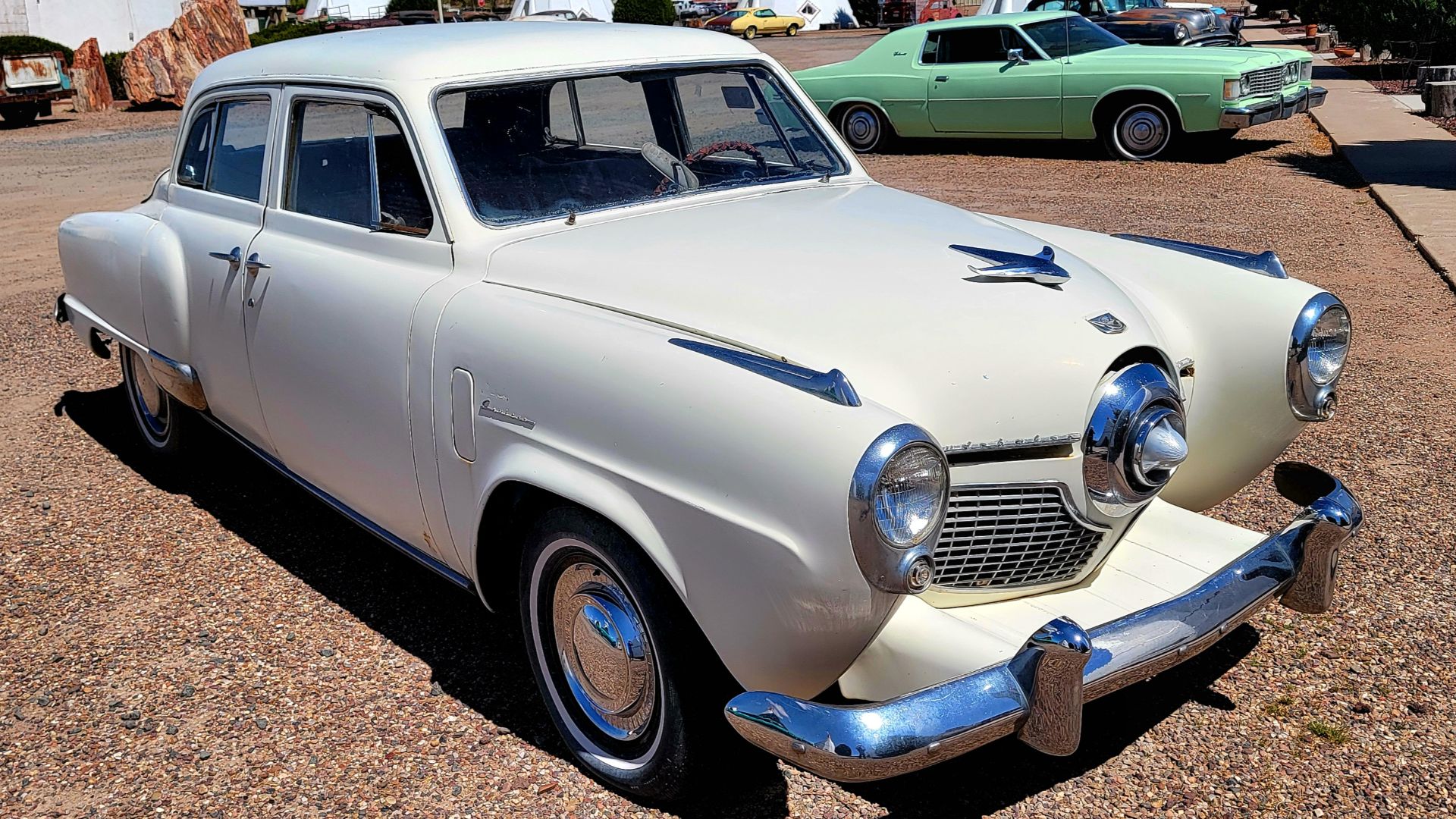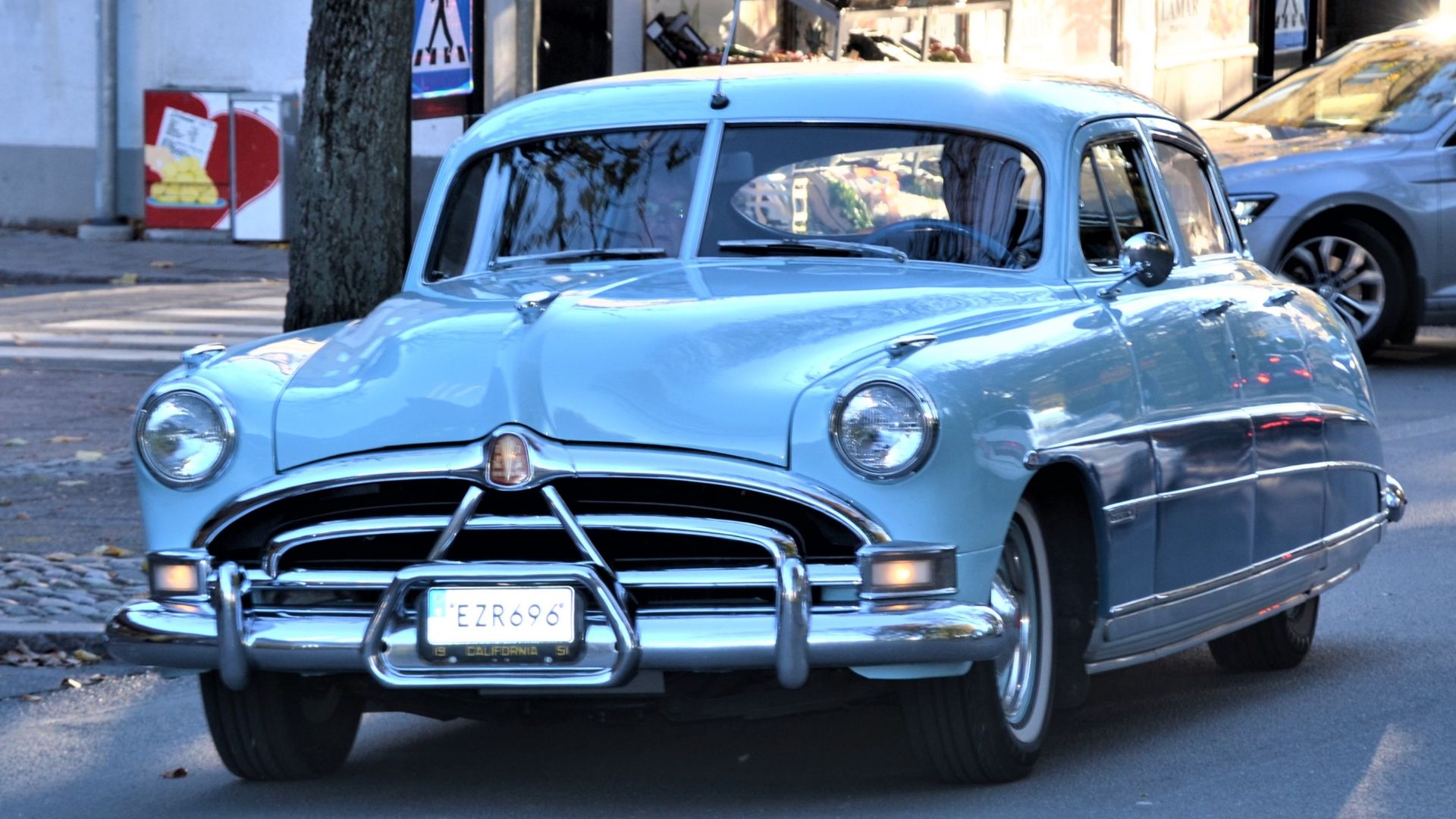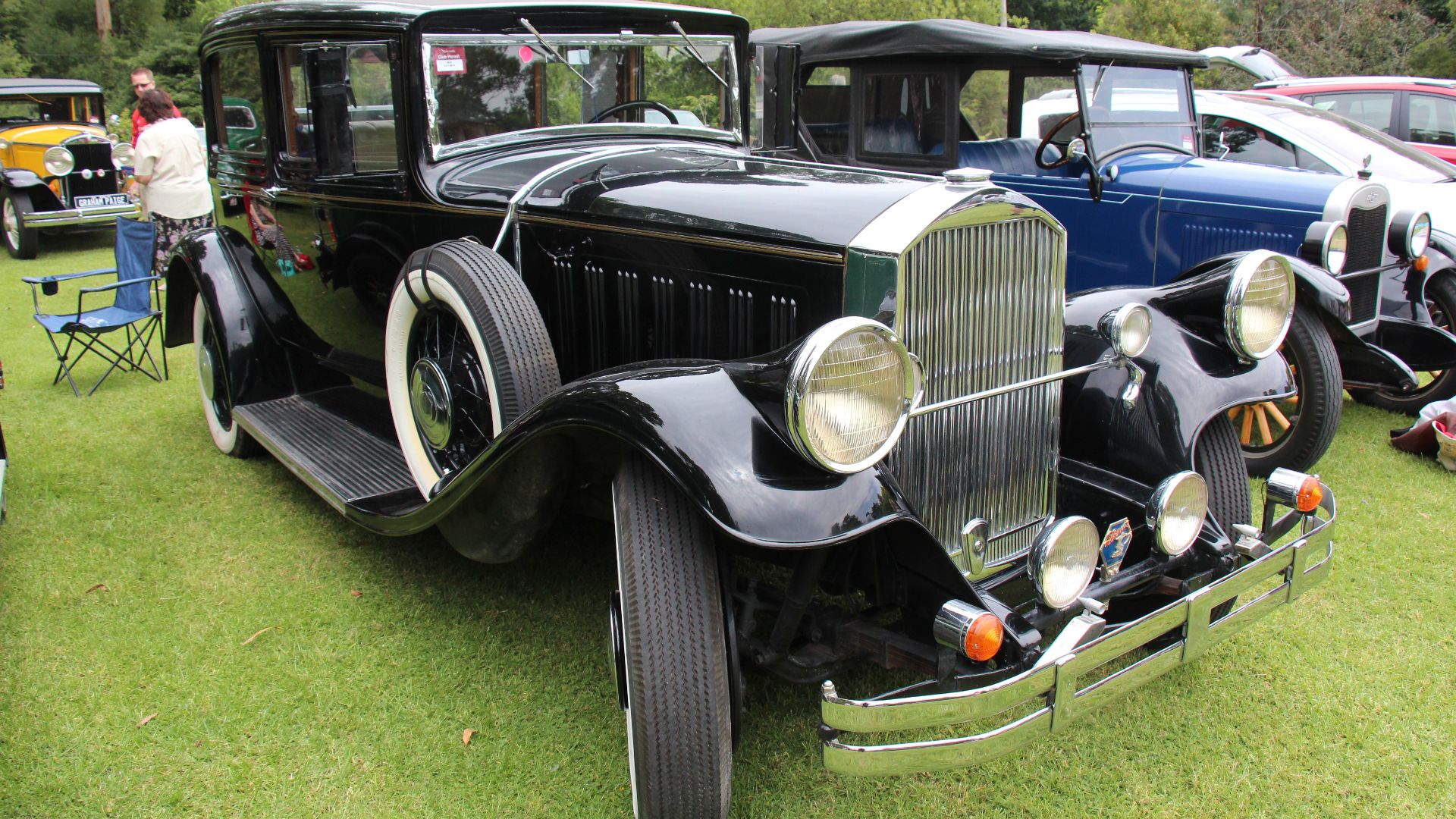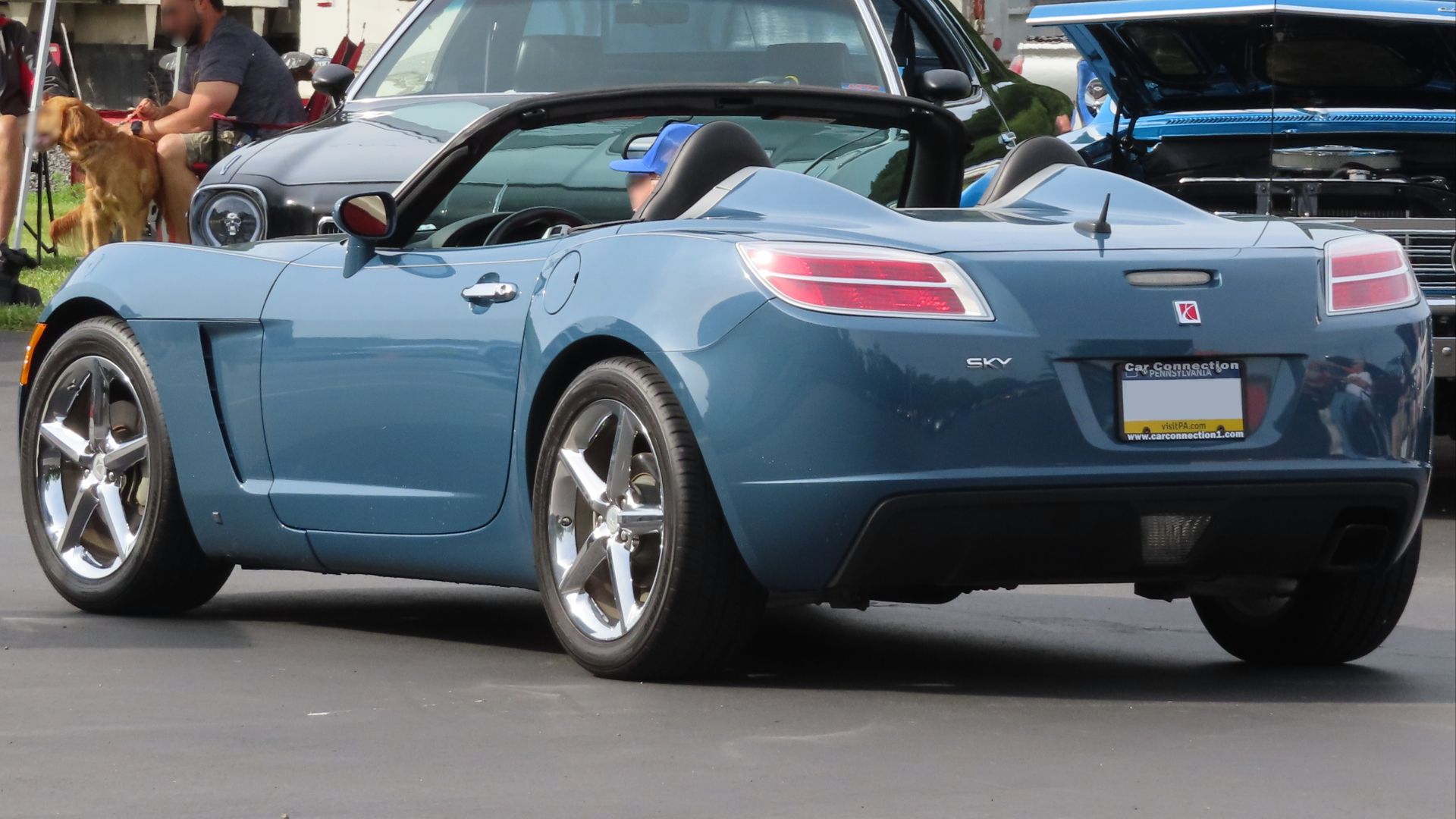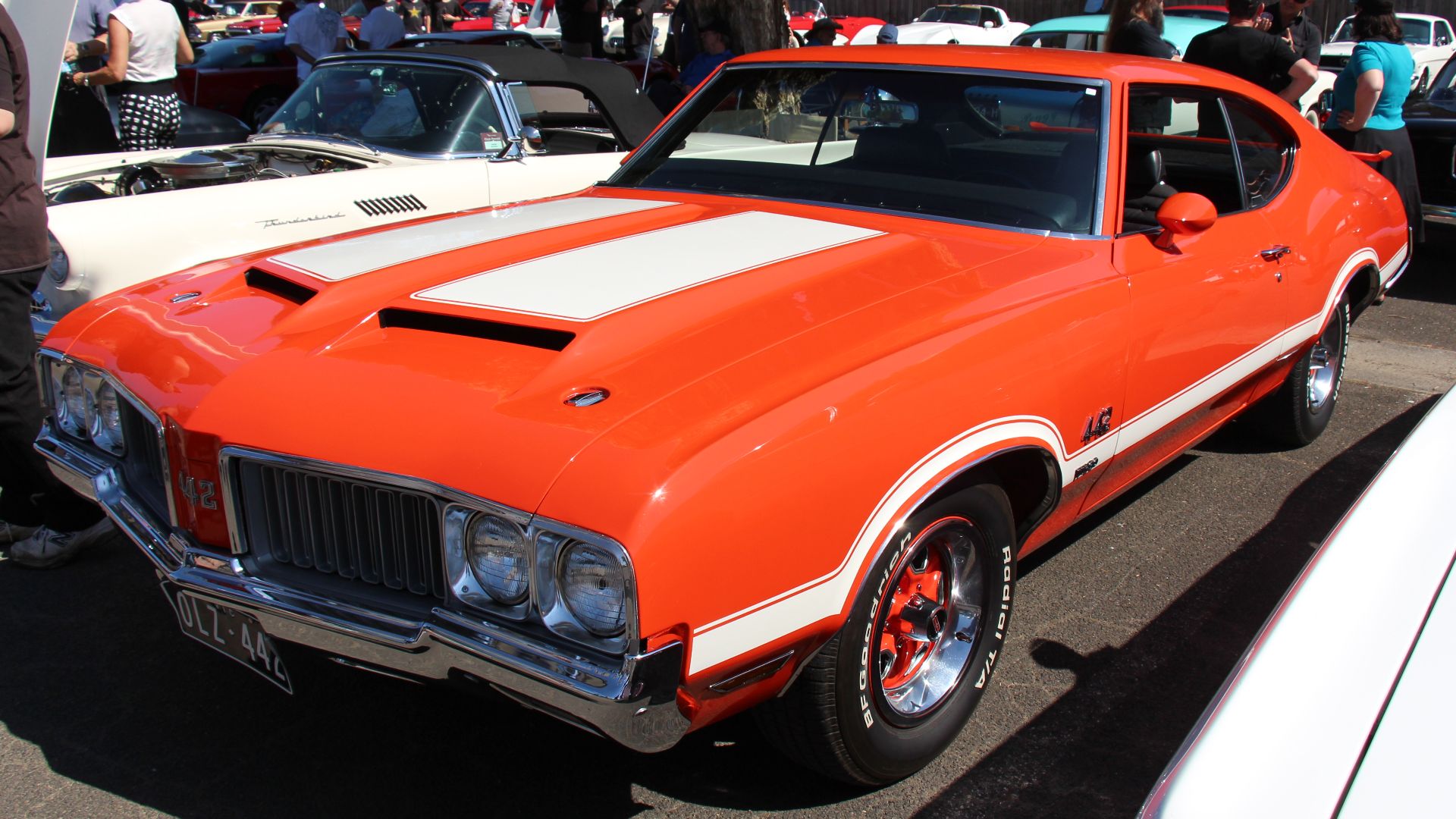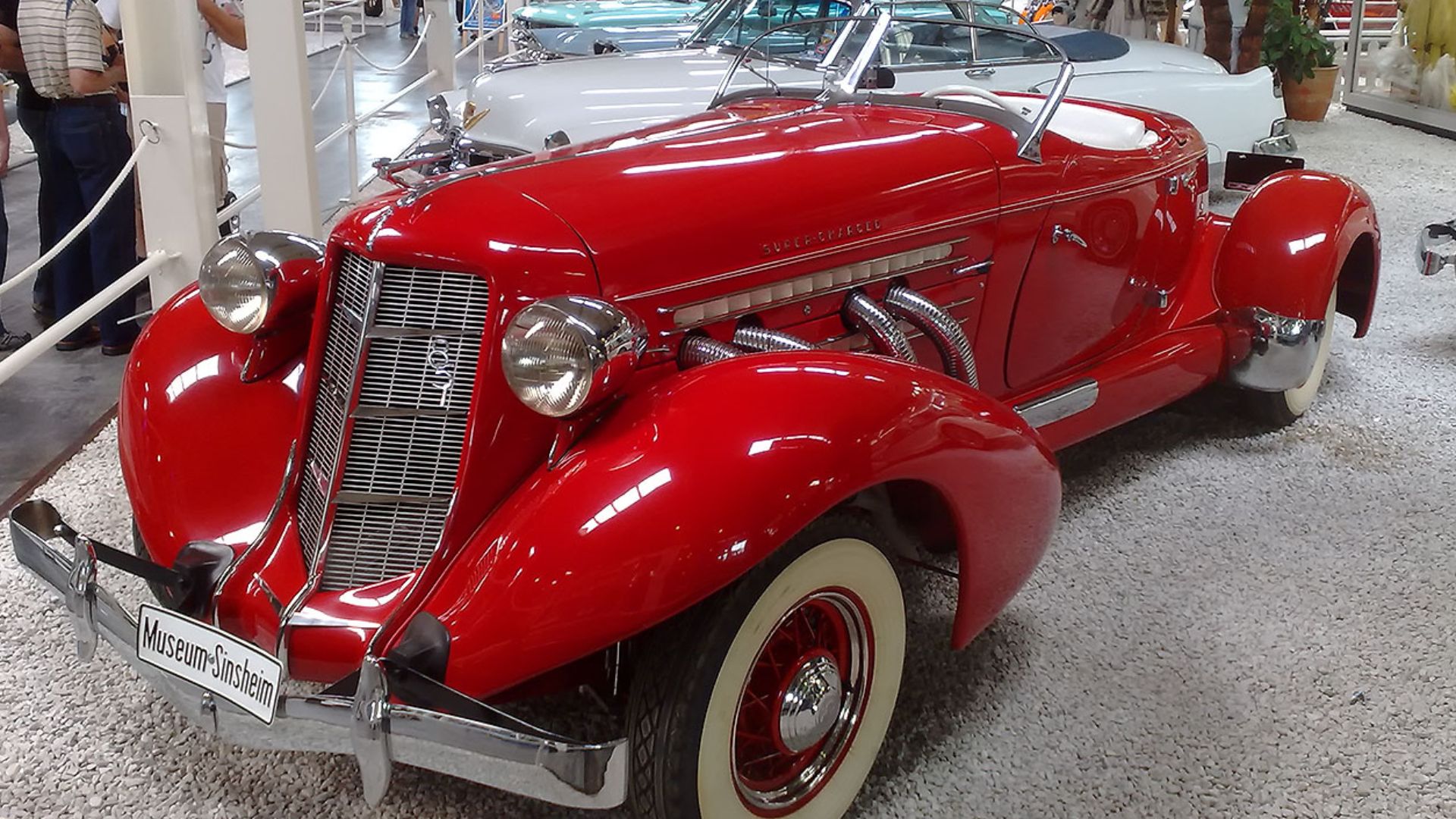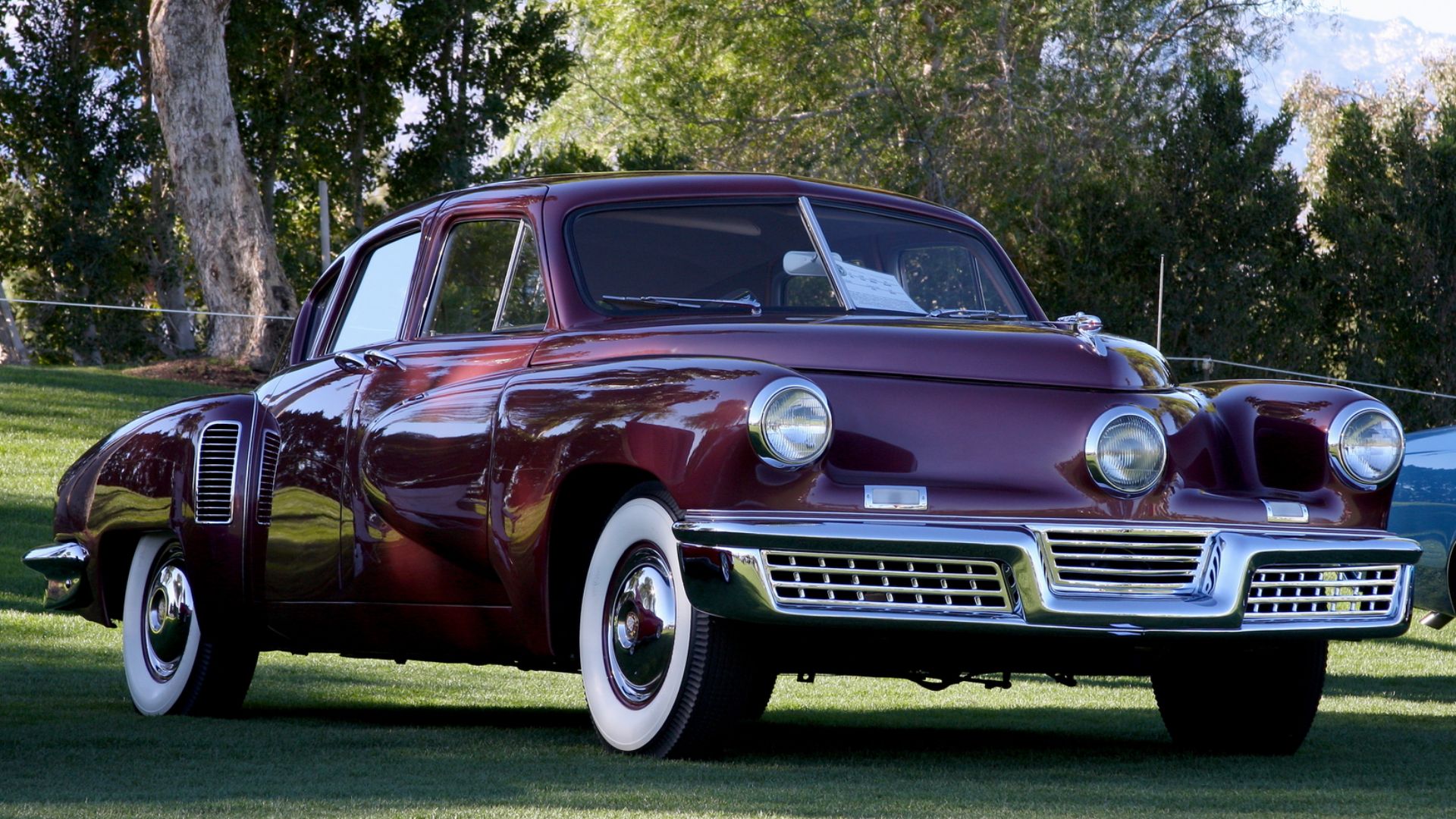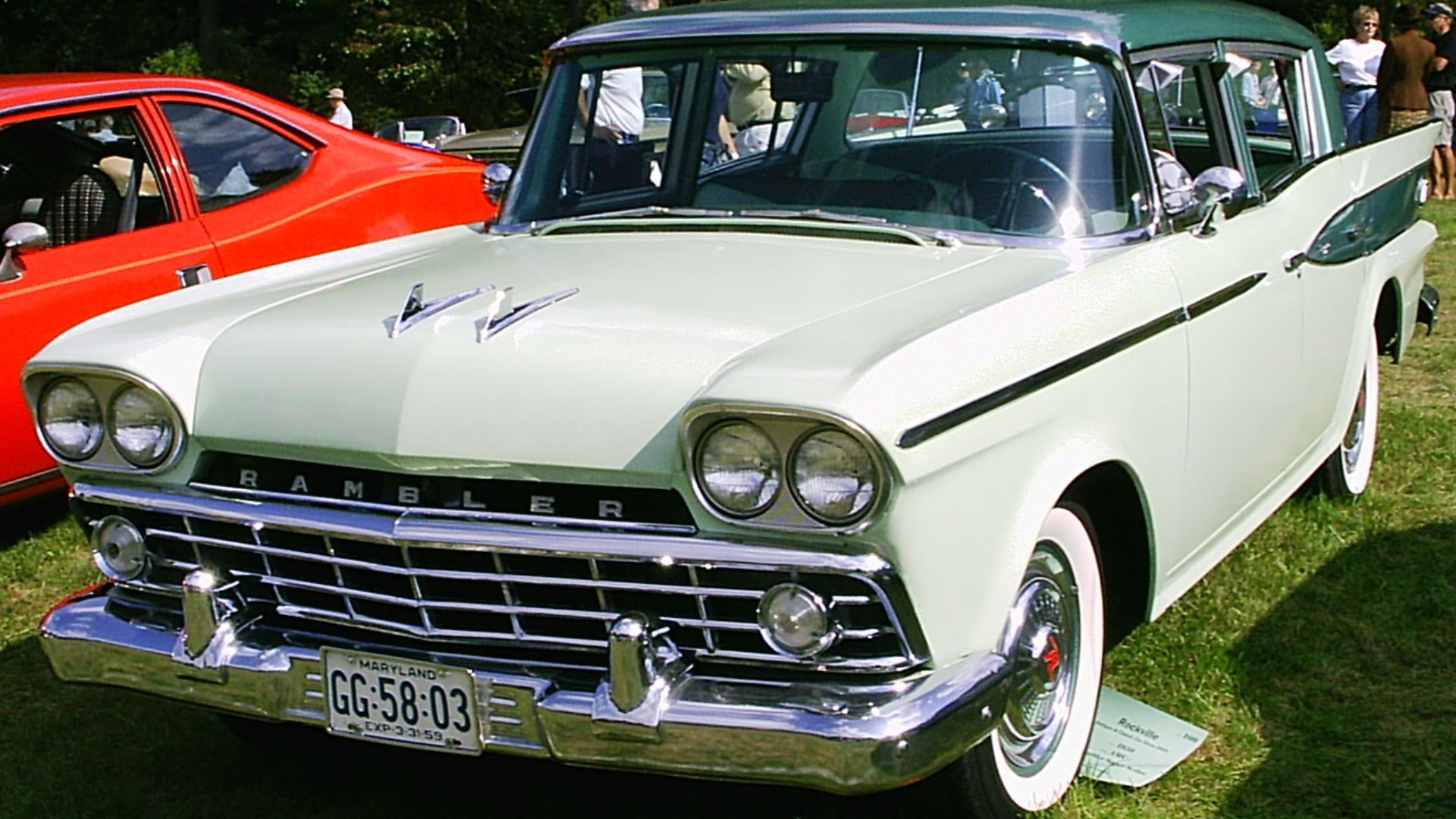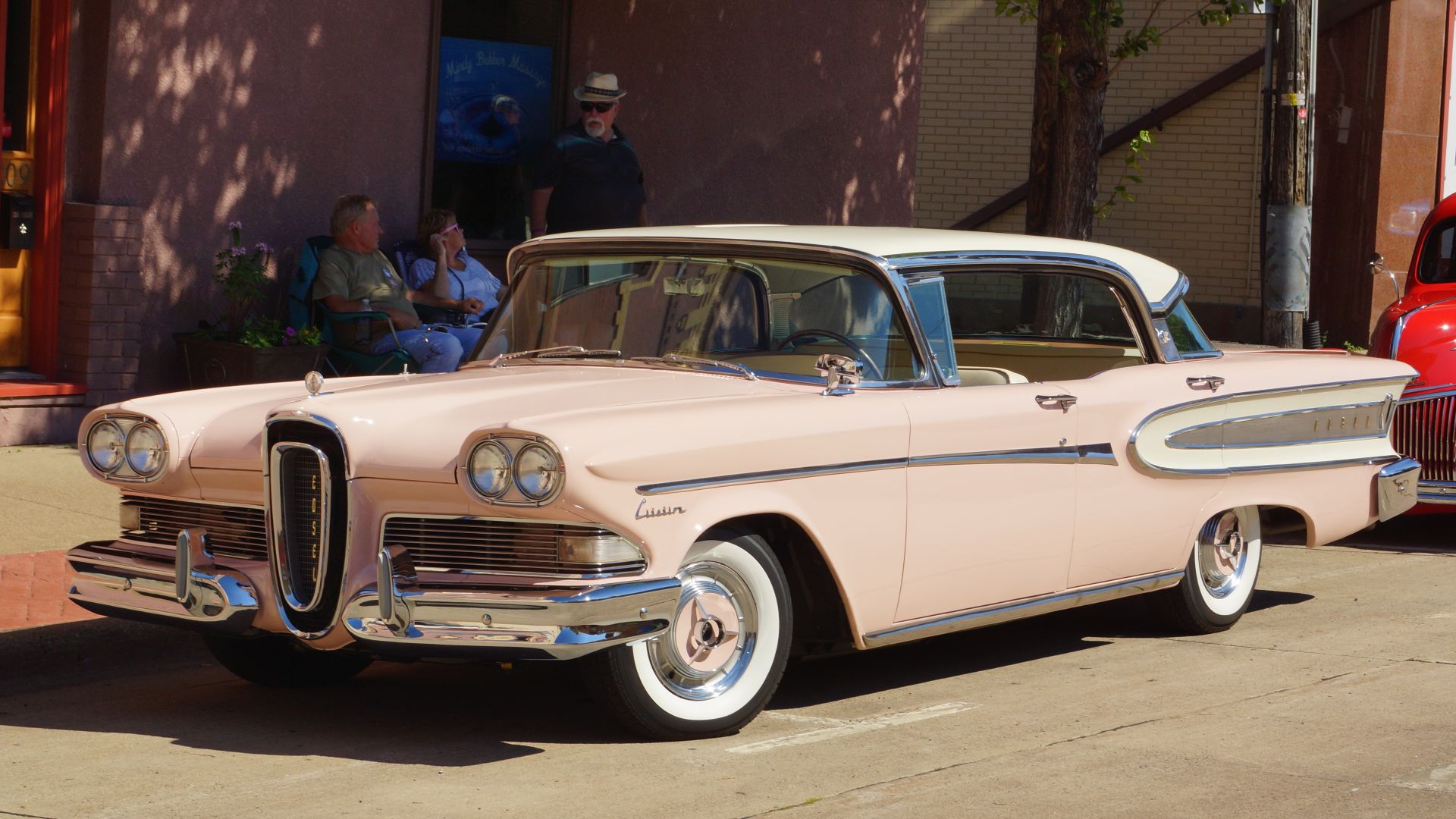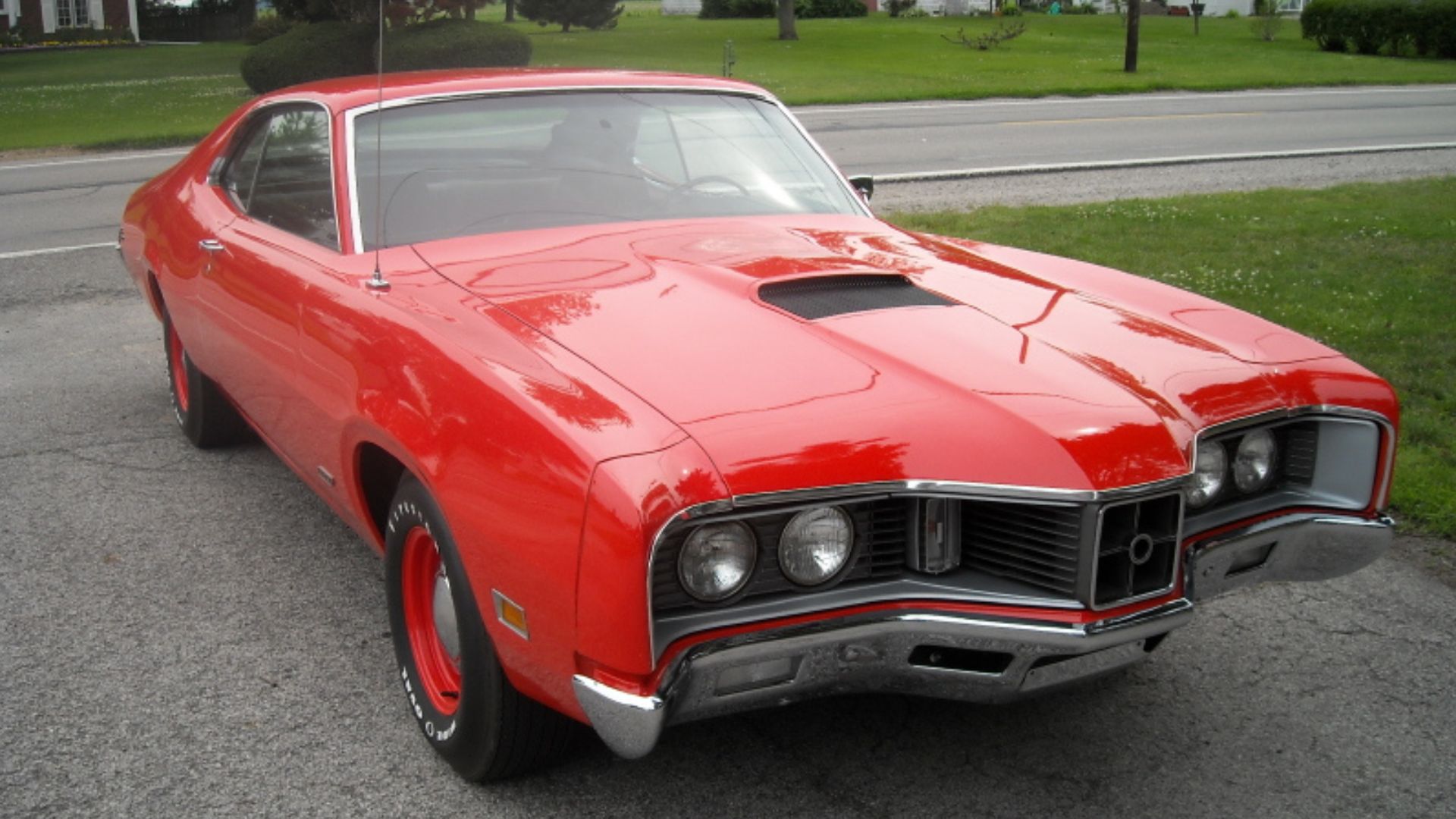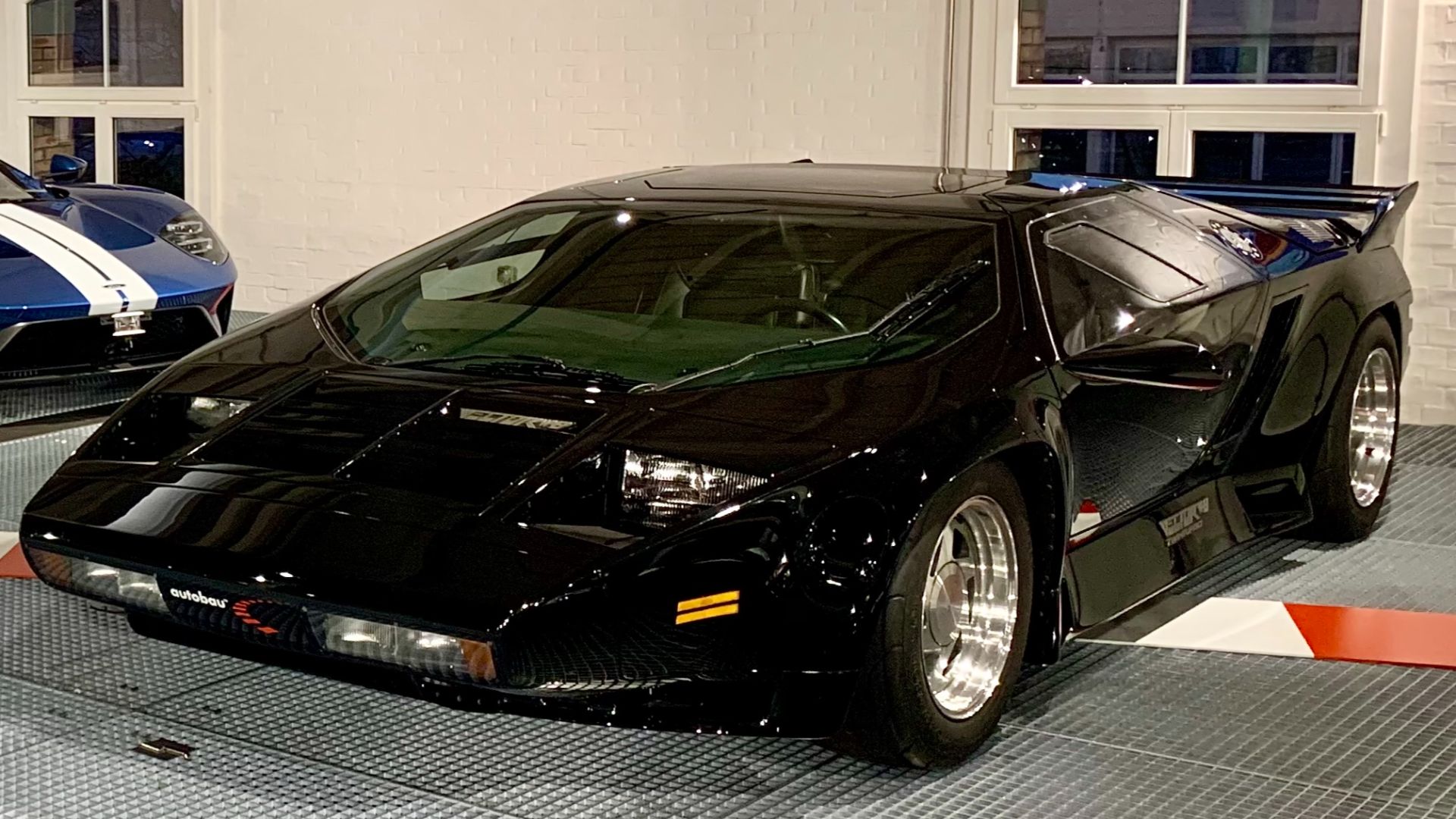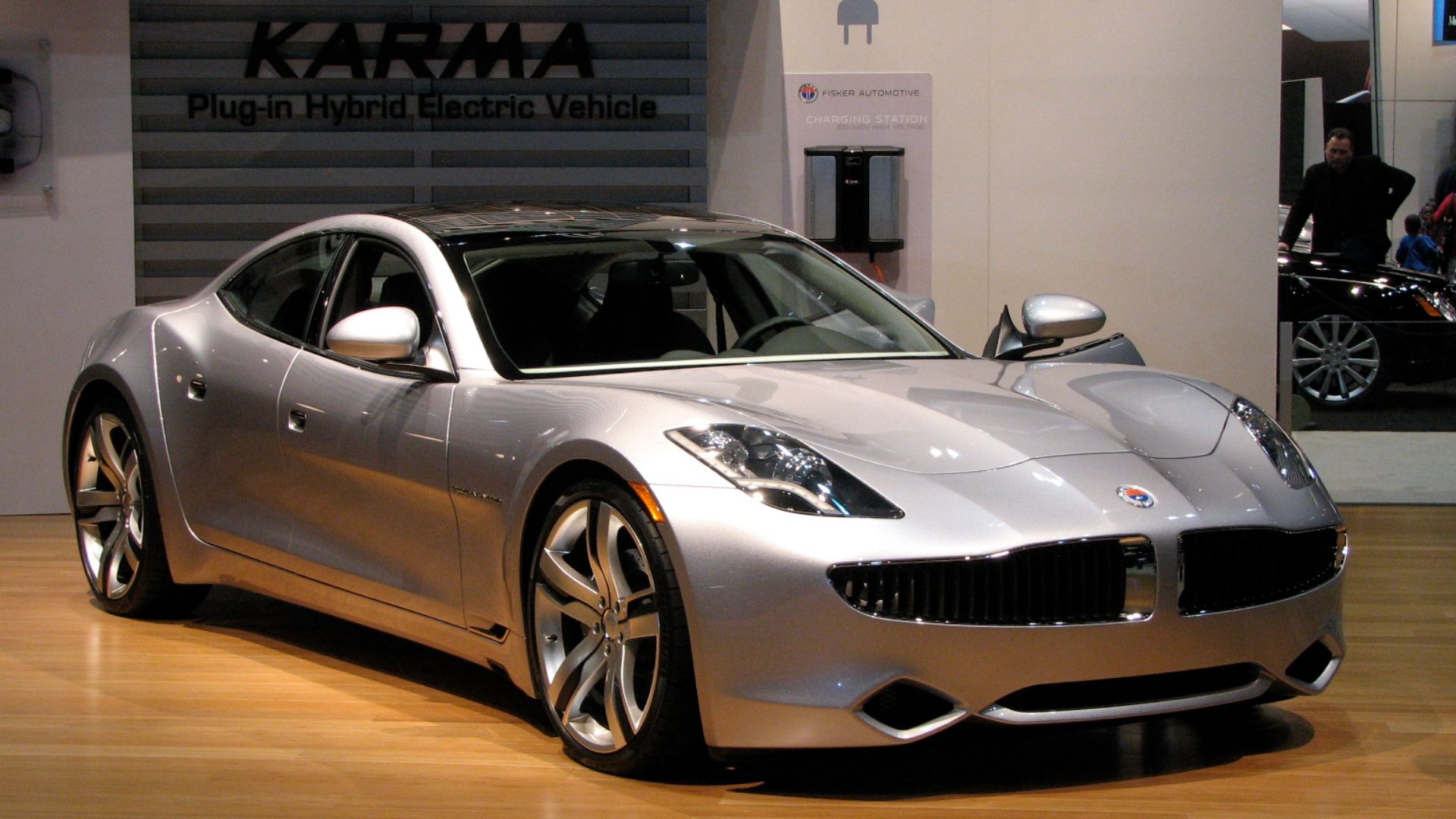Industry Titans Missing In Action
While it's a sad reality to consider, it's undoubtedly true that some of America's most distinct automakers—those who broke barriers and pushed boundaries to their limits—were eventually forced to close their doors forever. The fall of each car brand tells the age-old story of balancing ambition and execution. Let's take a trip down memory lane and explore 20 prominent car brands that fell off the map. How many do you recognize?
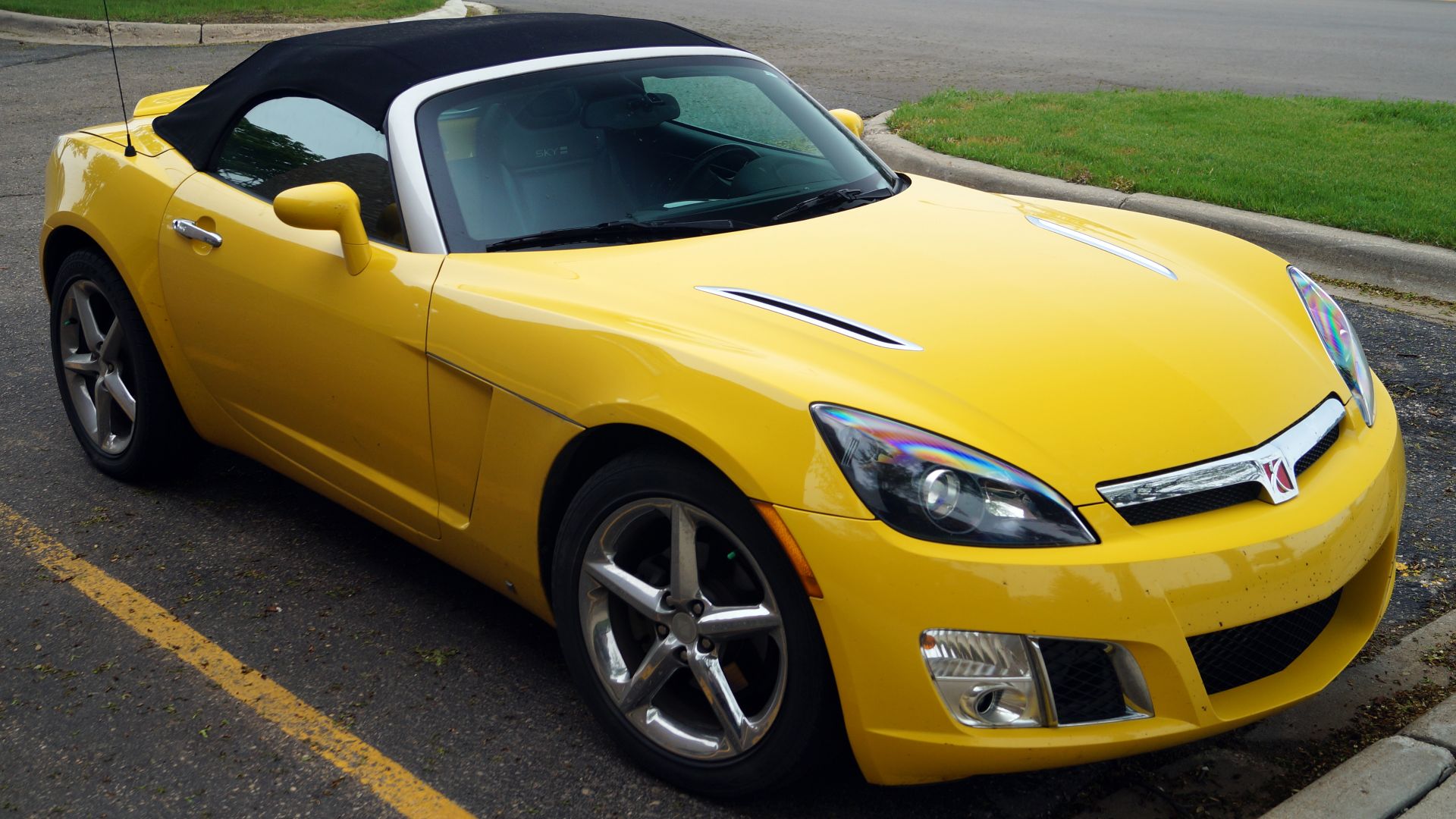 Greg Gjerdingen from Willmar, USA on Wikimedia
Greg Gjerdingen from Willmar, USA on Wikimedia
1. Studebaker
With its century-long voyage, Studebaker demonstrated American creativity through outstanding automobiles and wagons. The brand's signature Champion and Commander models offered premium quality at affordable prices, while their 1962 Avanti turned heads. However, declining profits forced Studebaker to close in 1966.
2. Hudson
In 1951, Hudson Hornet dominated NASCAR with its unique "step-down" design and powerful engine. The company led the safety industry, introducing dual-brakes and stronger unibody construction. Still, it faced financial difficulties after the lackluster performance of its high-priced Jet compact car line. Hudson then gave up and merged with Nash-Kelvinator in 1954, creating American Motors Corporation.
3. Nash
Modern heating and ventilation systems really changed the game for comfort in cars, thanks to Nash. Under Charles Nash's guidance, they rolled out America's first compact car, the Metropolitan. Their inventive vibe continued through American Motors Corporation after merging with Hudson. However, this only helped them sustain operations for some time. Competition and financial viability made the brand disappear.
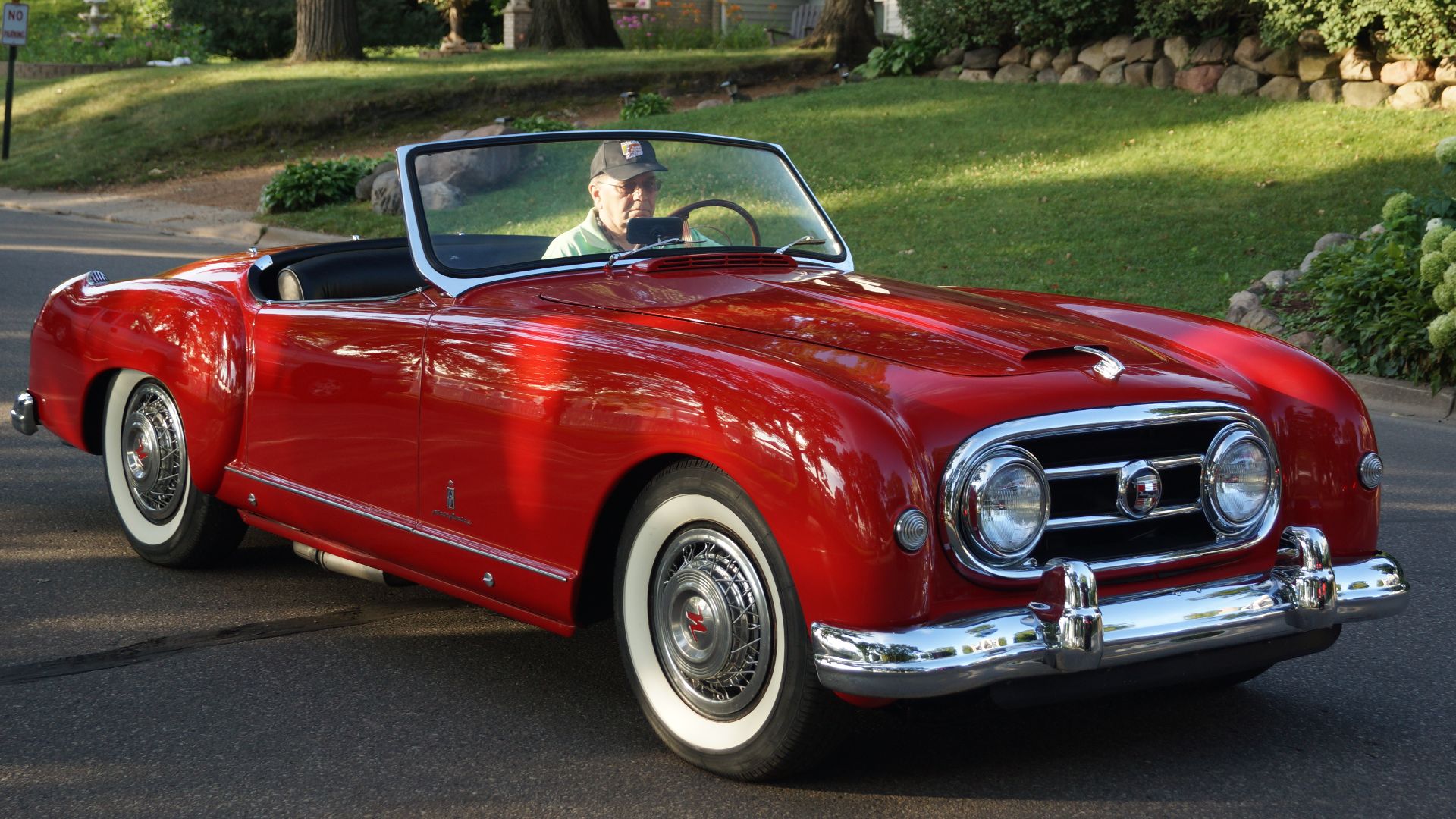 Greg Gjerdingen from Willmar, USA on Wikimedia
Greg Gjerdingen from Willmar, USA on Wikimedia
4. Pierce Arrow
Silent headlamps defined Pierce Arrow's signature design, mounting them into front fenders for a distinct look. The Buffalo-based manufacturer catered to America's elite, crafting luxurious vehicles for presidents and celebrities. Despite their prestige, the Great Depression forced Pierce Arrow's shutdown in 1938.
5. DeSoto
After producing two million vehicles over 32 years, changing markets ended DeSoto's run. Innovation had driven DeSoto forward when Chrysler launched the brand in 1928. Their Adventurer models brought high performance to the luxury segment, while the Fireflite dazzled with Forward Look styling.
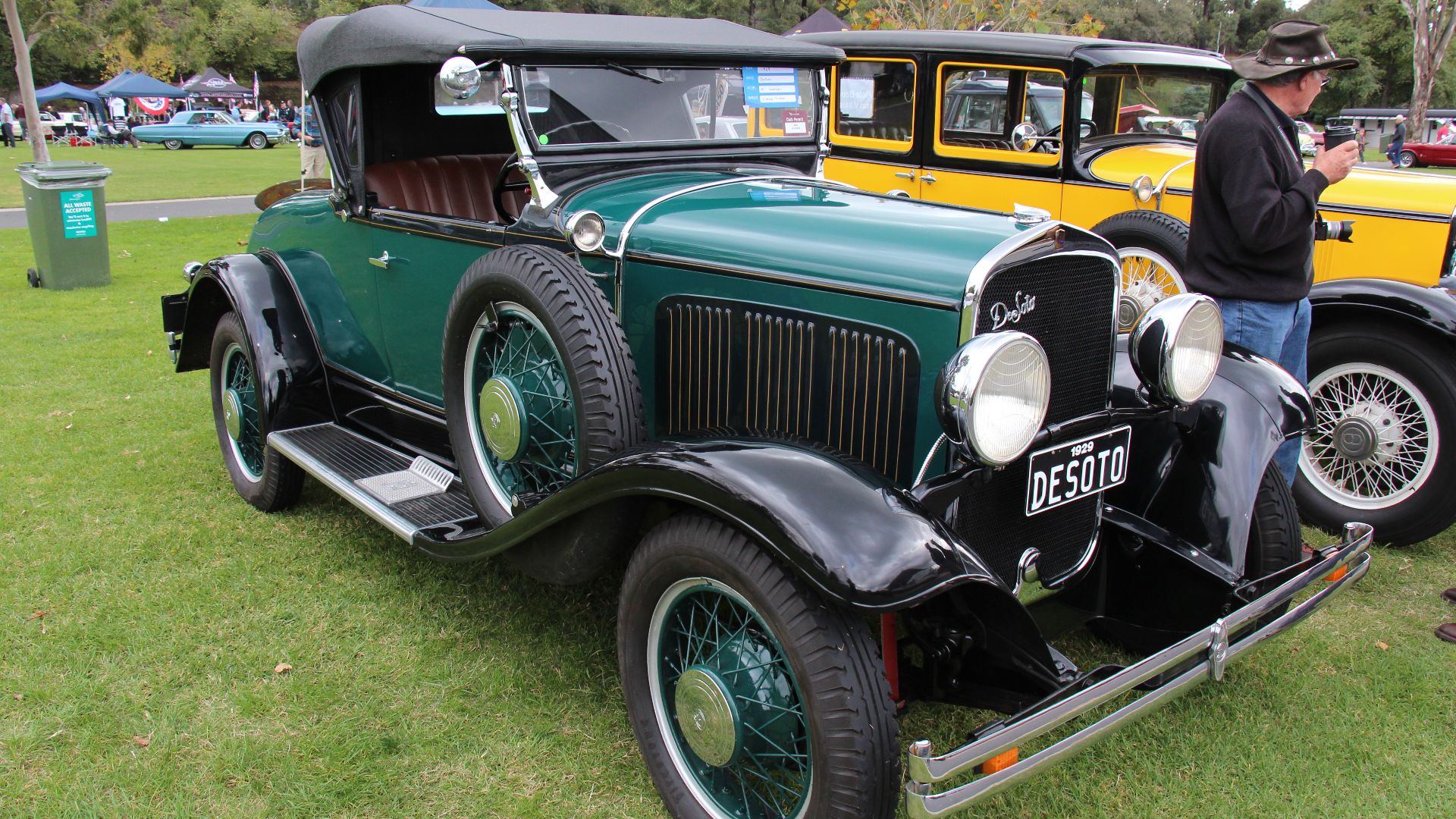 Greg Gjerdingen from Willmar, USA on Wikimedia
Greg Gjerdingen from Willmar, USA on Wikimedia
6. Saturn
Remember when buying a car felt like joining a family? Saturn's no-haggle pricing and annual homecoming picnics created a cult following. Their dent-resistant plastic panels and efficient designs won hearts nationwide. Sadly, GM's 2009 bankruptcy ended this fantastic experiment in customer-first car selling.
7. Pontiac
Nobody expected Pontiac's 1964 GTO to create the muscle car era. After all, it was their "Wide Track" stance and youthful marketing that altered the brand's image. Through decades of success with Firebird Trans Am and Grand Prix models, Pontiac thrived until General Motor's need to make some cuts amidst their 2009 bankruptcy.
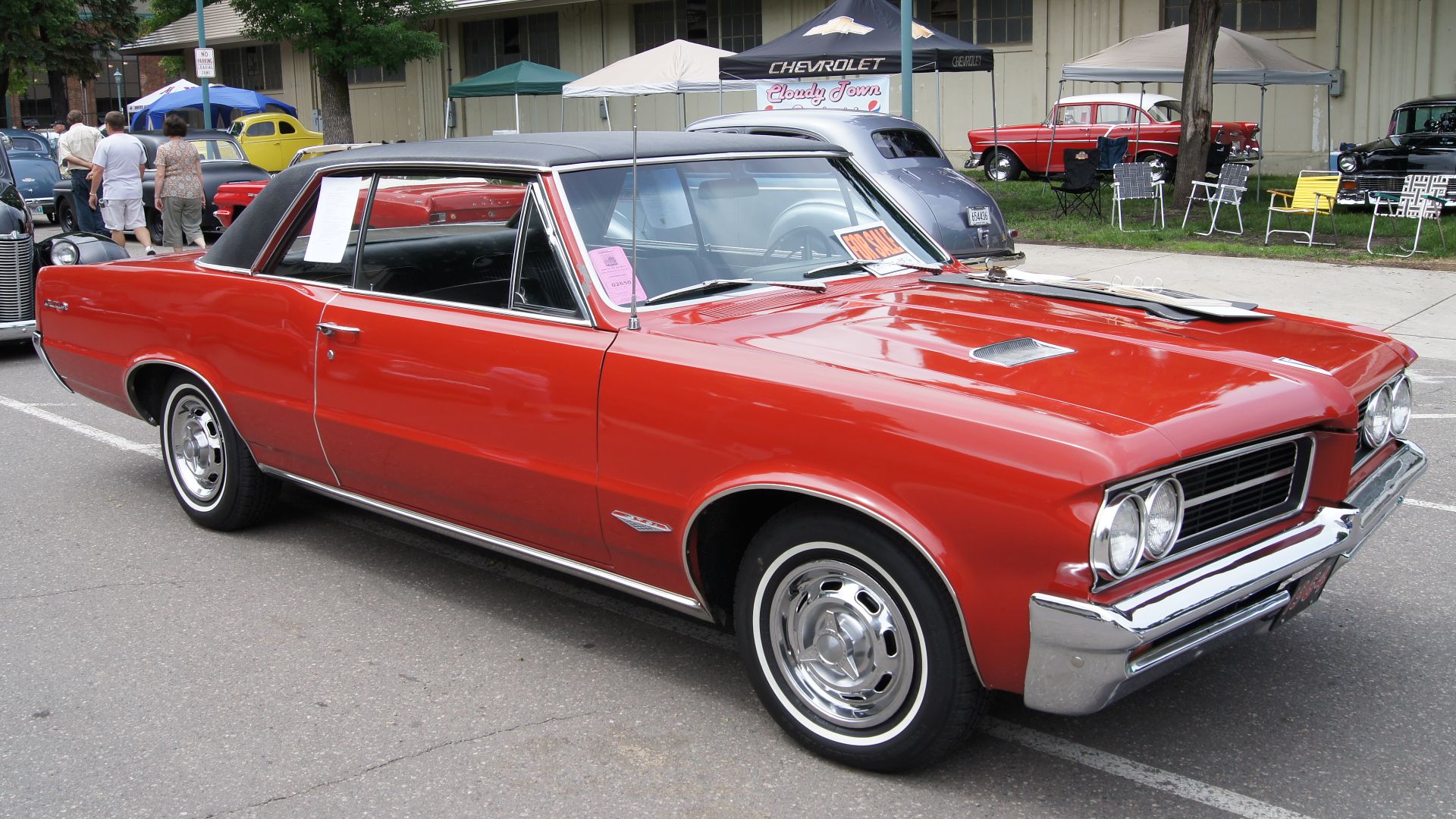 Greg Gjerdingen from Willmar, USA on Wikimedia
Greg Gjerdingen from Willmar, USA on Wikimedia
8. Oldsmobile
When the first Curved Dash Oldsmobile rolled out in 1897, it brought about a change in the car industry. Oldsmobile was a trailblazer when it came to automatic transmissions and the famous Rocket V8 engine. They made 35 million cars over 107 years but had to stop in 2004.
9. Packard
Their well-known tagline, "Ask the Man Who Owns One," reflected Packard’s stellar reputation. Unfortunately, the company had to close down in 1958 due to mismanagement and market changes. Their automotive legacy, though, included presidential limousines and precision engines that powered WWII PT boats.
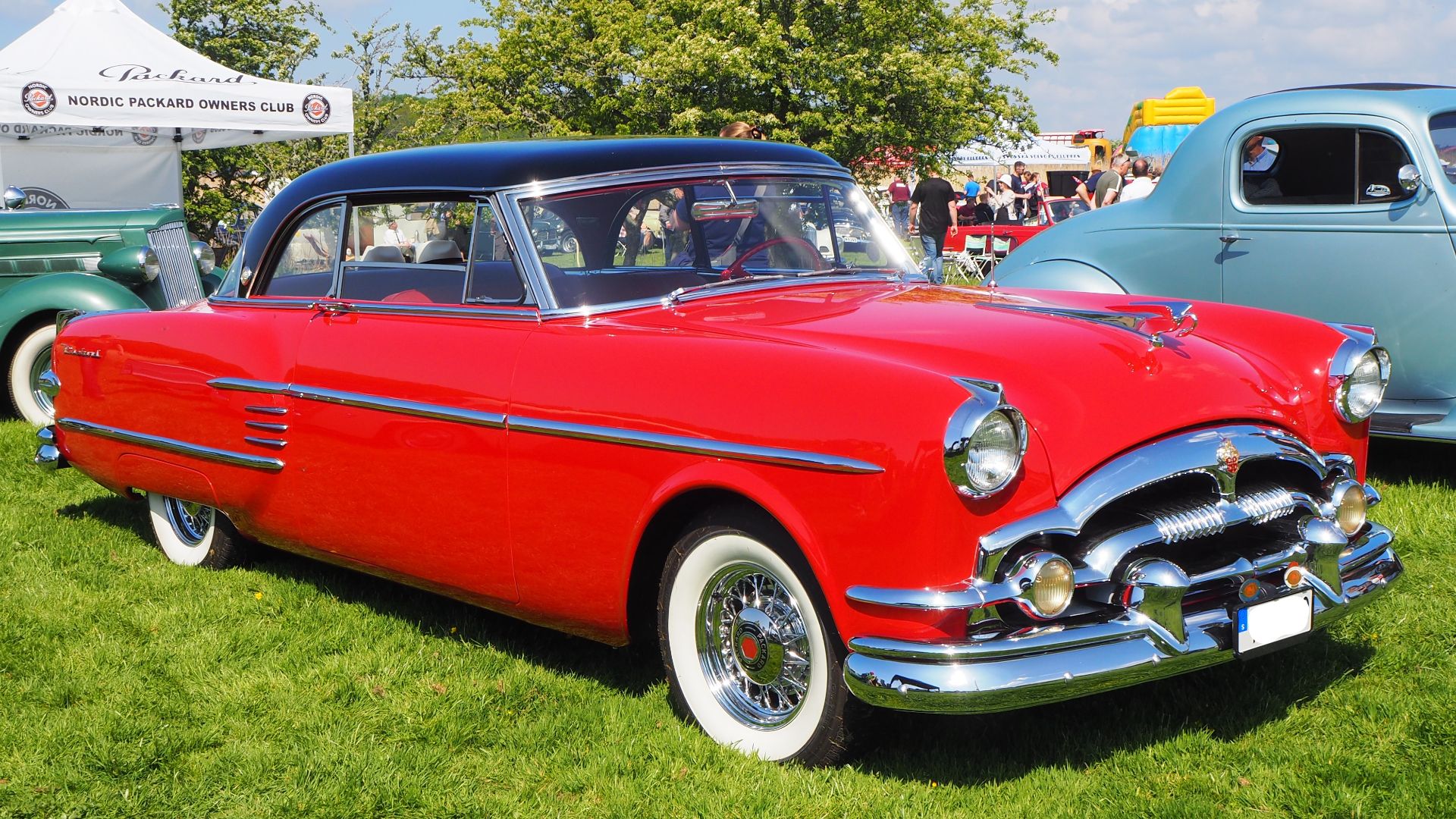 Herranderssvensson on Wikimedia
Herranderssvensson on Wikimedia
10. Auburn Elegant
Despite Auburn's engineering excellence and elegant designs, the company succumbed to the Great Depression in 1937. However, its legendary Speedster made history, delivering a guaranteed 100 mph performance and setting speed records. Meanwhile, Auburn's luxury division, Duesenberg, produced the most expensive automobiles in America.
11. DeLorean
A scandal wasn't how John DeLorean imagined his dream would end. His futuristic DMC-12, with its brushed stainless steel body and jaw-dropping gull-wing doors, captured imaginations worldwide. While "Back to the Future" made it a cultural icon, DeLorean's 1982 bankruptcy ended the goal after just 9,000 cars.
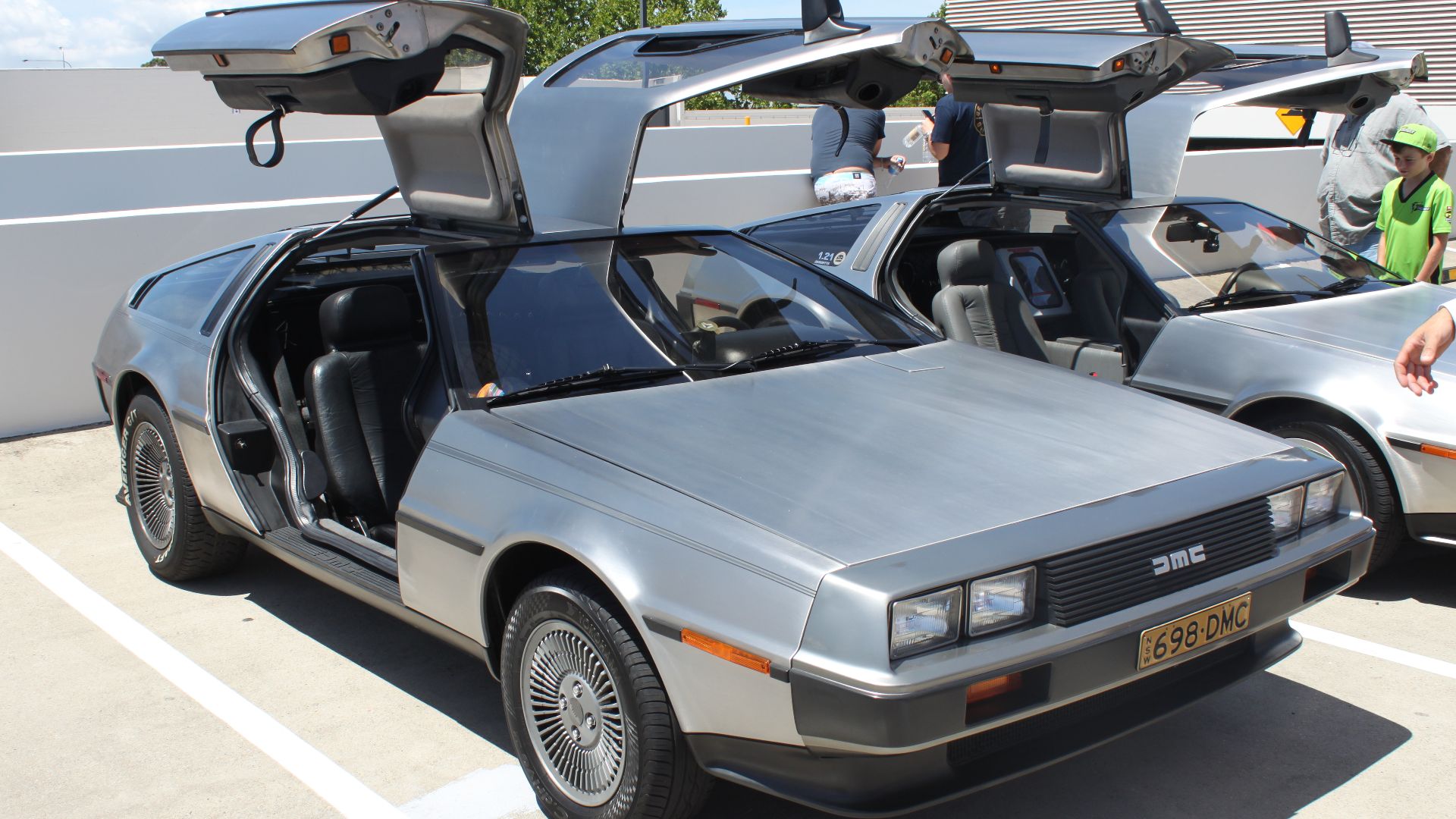 Jeremy from Sydney, Australia on Wikimedia
Jeremy from Sydney, Australia on Wikimedia
12. Tucker
Picture a car with a Cyclops eye that follows the curves—that was Tucker's genius. But, after building 51 revolutionary vehicles, corporate giants and scandal crushed Preston Tucker's vision. The "Car of Tomorrow" had a padded dashboard, pop-out windshield, and a central headlight that turned with the wheels.
13. Kaiser-Frazer
The brand introduced the Henry J, a no-frills compact car. It was among the first of its kind in post-WWII America, designed for budget-conscious buyers. Even though it was affordable, sales declined due to competition and simple design. Then, Kaiser-Frazer shifted focus to Jeep production but failed again. By 1970, they had stopped making cars and had completely shut down.
 dave_7 from Lethbridge, Canada on Wikimedia
dave_7 from Lethbridge, Canada on Wikimedia
14. Rambler
Would you believe a compact car won Motor Trend's Car of the Year in 1963? Hot rodders laughed at Rambler's focus on economy, but they were ahead of their time. Their smart features included reclining seats and aluminum engines. However, America's muscle car craze ended Rambler's practical reign in 1969.
15. Edsel
Apparently, Edsel failed badly in the 1950s, burning away $250 million. Since Ford shut it down in 1960, Edsel has come to represent corporate failure. Anyway, its infamous "horse-collar" grille became a laughingstock in spite of its inventive features, including ergonomic controls and Teletouch transmission.
16. Plymouth
Affordable yet innovative, Plymouth altered automotive safety with standard hydraulic brakes. The brand grew to become America's third-largest automaker by 1940. While their Road Runner and Barracuda dominated muscle car culture, Plymouth couldn't survive Chrysler's 2001 restructuring.
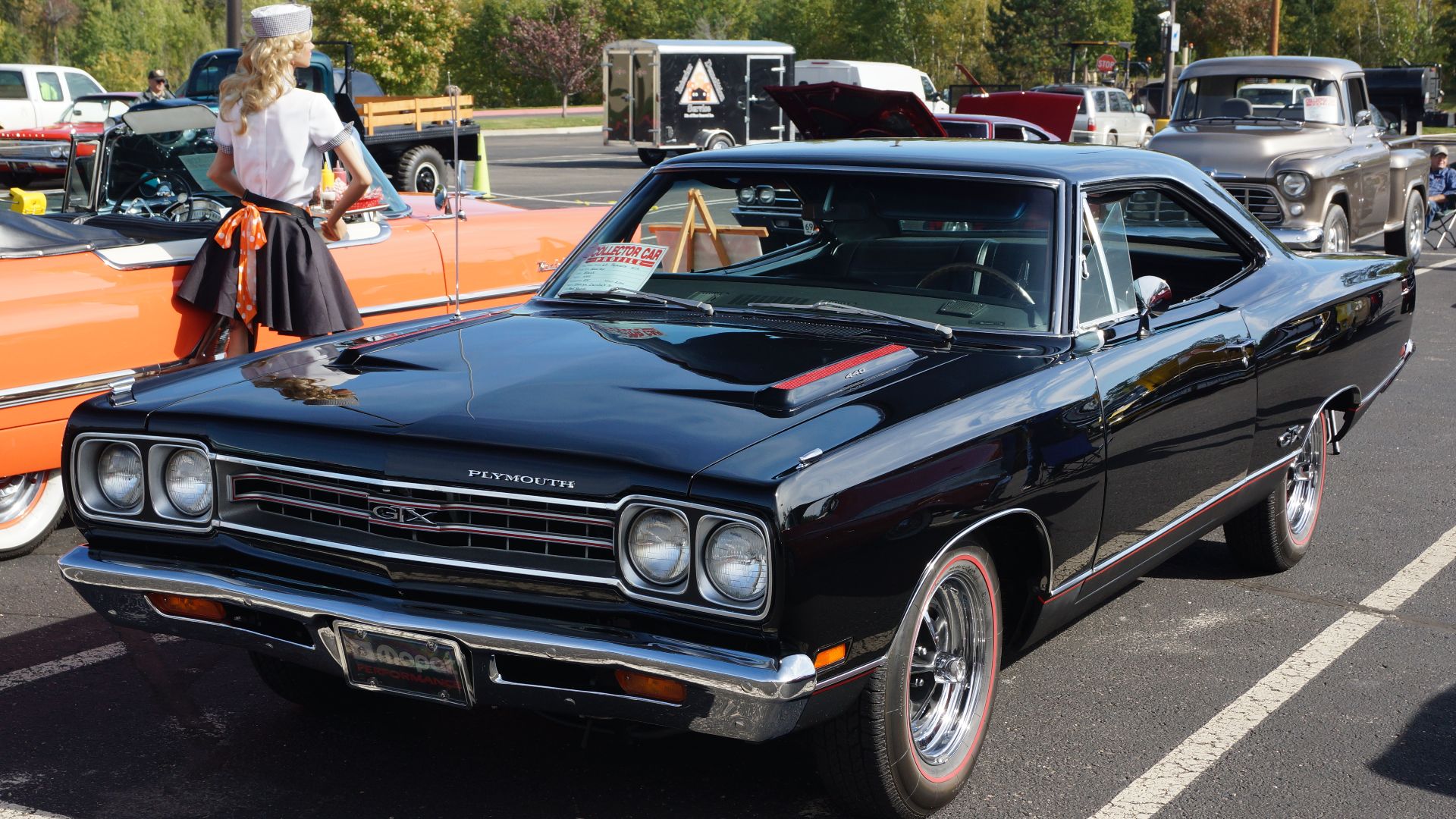 Greg Gjerdingen from Willmar, USA on Wikimedia
Greg Gjerdingen from Willmar, USA on Wikimedia
17. Mercury
Hot rod culture exploded when James Dean cruised in his Mercury Eight. The brand gave us icons like the Cougar and Marauder before Ford finally shut down Mercury in 2011, ending an era of attainable luxury. For seven decades, they made vehicles that balanced luxury and performance well.
18. Eagle
With rally-bred performance machines, Eagle, which was born out of the ashes of AMC, took to the skies. Their Talon TSi, created in collaboration with Mitsubishi, won over fans and dominated street races. Eagle closed by 1998, even though they produced some thrilling turbocharged sports cars of the 1990s.
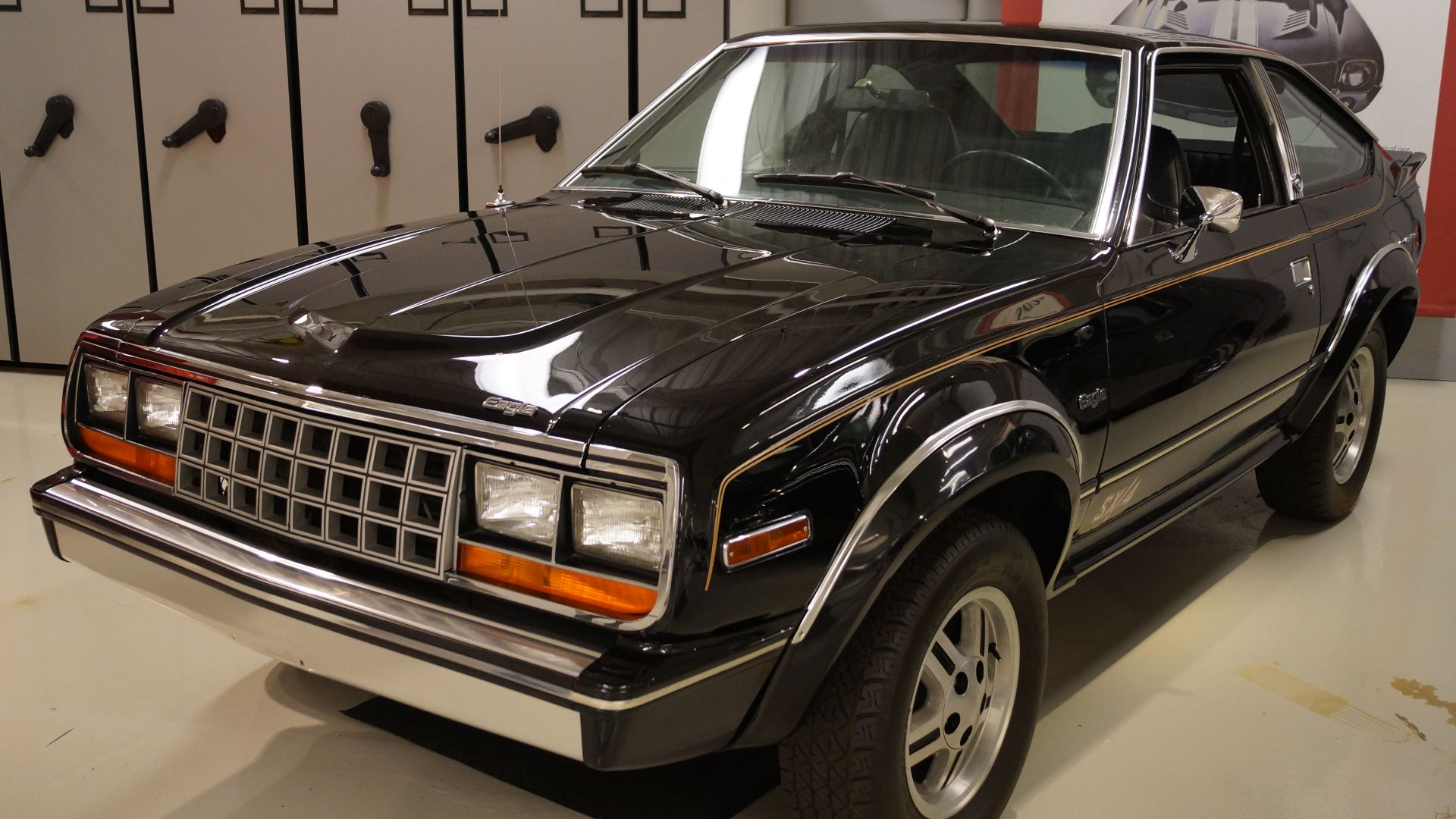 Greg Gjerdingen from Willmar, USA on Wikimedia
Greg Gjerdingen from Willmar, USA on Wikimedia
19. Vector
Surely, the company produced only 20 cars before 1999, but each one proved America could build world-class exotics. Jerry Wiegert dared to challenge Ferrari with American aerospace technology. His Vector W8 literally resembled a jet and packed twin-turbo power that scared supercars.
20. Fisker
Before Tesla dominated electric luxury, Henrik Fisker created the stunning Karma sedan. Combining sustainable technology with supercar styling, it attracted many big celebrities and tech moguls. In 2012, Hurricane Sandy destroyed their entire inventory, and by 2013, this pioneering electric model had disappeared.


